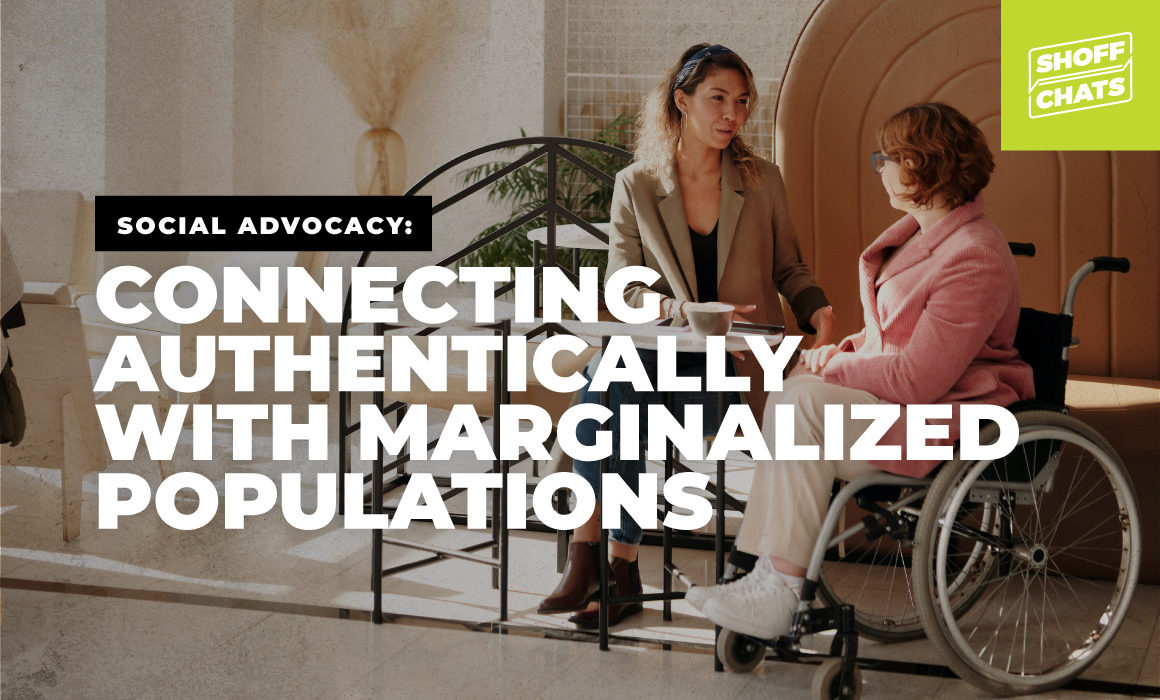Social Advocacy: Connecting Authentically with Marginalized Populations
Members of marginalized populations have made huge strides in the last decade to find and amplify their voices in ways that have influenced major brands. And brands are finding ways to connect with these populations to expand and deepen their relationships. In a recent Shoff Chat, our guests Mark Rademacher and Ola Ojewumi unpacked the trends and some examples of brands that are getting it right – and those that have work to do.
Rademacher is associate professor of strategic communication at Butler University and has dedicated his work in recent years to understanding the intersection of identity, mass media and consumer culture, focusing on how marginalized populations self-represent through social media platforms.
Ojewumi is the founder of two nonprofits and a writer, speaker and patient advocate. She uses her personal story and passion to bring attention to the rights of women, people of color and people with disabilities.
In defining marginalized populations, Rademacher said it can be any group of people whose voice is underrepresented in the mainstream social dialogues. People with disabilities are one example. He said that the rise of digital platforms has helped marginalized groups gain a voice and self-represent more effectively because there are no “gatekeepers” to expressing authentic identities.
Ojewumi reminded the group that people with disabilities are in fact the largest minority population in America, and their buying power is significant. Globally, there are 1.3 billion people living with disabilities. People with disabilities control $6 trillion in global spending.
Because of that buying power and because the next generation of consumers and employees demands that brands represent and even advocate for marginalized groups, brands are taking notice.
Key takeaways from the discussion included:
- There is a fine line between authentic representation and “checking boxes” – inclusivity is a worthy goal, but giving people true representation goes beyond marketing to include product design, customer experience and so many other areas.
- Brands that don’t match up the internal experience for employees with the external presentation of inclusivity run the risk of a credibility gap, which can cause more harm than good.
- Ask people from the marginalized group you are working with for their input in your efforts. You’re likely to learn things along the way and do a better job representing the group authentically.
If you’d like to learn more about how your brand can authentically engage with marginalized groups, let’s talk. Contact Katherine Coble.
Listen to this episode or past Shoff Chats episodes here.


